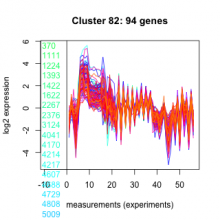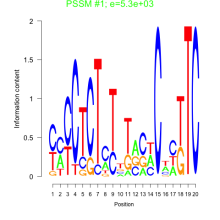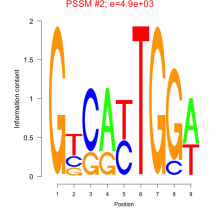22301 (PMM1) PLN02423Thalassiosira pseudonana
| Chromosome | Product | Transcript Start | End | Strand | Short Name | |
|---|---|---|---|---|---|---|
| 22301 | chr_4 | (PMM1) PLN02423 | 1296521 | 1297647 | + | PLN02423 |
| NCBI ID | Ensembl Genomes exon ID |
|---|---|
| 7446111 | Thaps22301.2, Thaps22301.1 |
| Expression Profile | Conditional Changes | Cluster Dendrogram | Discovered Potential cis-Regulatory Motifs |
|---|---|---|---|
Thaps_hclust_0082 |
 |
 |
   |
| Normalized Mean Residue | Discovered Potential cis-Regulatory Motifs | |
|---|---|---|
|
Thaps_bicluster_0134 |
0.26 |
 5300  4900 |
| T. pseudonana | P. tricornutum | P. tricornutum DiatomCyc | F. cylindrus | Pseudo-nitzschia multiseries | E. huxleyi | C. reinhardtii | A. thaliana | P. sojae |
|---|---|---|---|---|---|---|---|---|
| Not available | PHATRDRAFT_28882 | PHATRDRAFT_28882 | 267260 | 63195 | 414472 | Cre14.g626900.t1.2 | AT2G45790.1 | 526336 |

Add comment